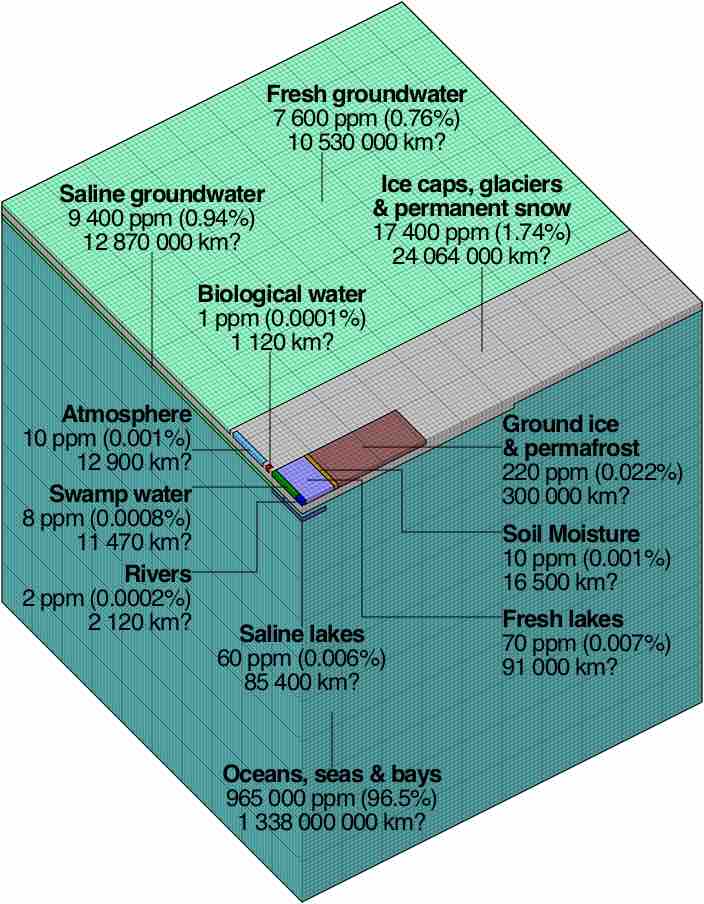Fresh water is naturally occurring water on the Earth's surface in ice sheets, ice caps, glaciers, bogs, ponds, lakes, rivers and streams, and underground as groundwater in aquifers and underground streams . Fresh water is generally characterized by having low concentrations of dissolved salts and other total dissolved solids. The term specifically excludes seawater and brackish water but it does include mineral rich waters such as chalybeate springs. The term "sweet water" has been used to describe fresh water in contrast to salt water.

Distribution (by volume) of water on Earth
Visualization of the distribution (by volume) of water on Earth. Each tiny cube (such as the one representing biological water) corresponds to approximately 1000 km³ of water, with a mass of about 1 trillion tonnes (200000 times that of the Great Pyramid of Giza). The entire block comprises 1 million tiny cubes.
Scientifically, freshwater habitats are divided into lentic systems, which are the stillwaters including ponds, lakes, swamps and mires; lotic systems, which are running water; and groundwater which flows in rocks and aquifers. There is, in addition, a zone which bridges between groundwater and lotic systems - the hyporheic zone - which underlies many larger rivers and can contain substantially more water than is seen in the open channel. It may also be in direct contact with the underlying underground water.
Fresh water creates a hypotonic environment for aquatic organisms. This is problematic for some organisms with pervious skins or with gill membranes, whose cell membranes may burst if excess water is not excreted. Some protists accomplish this using contractile vacuoles, while freshwater fish excrete excess water via the kidney. Although most aquatic organisms have a limited ability to regulate their osmotic balance and therefore can only live within a narrow range of salinity, diadromous fish have the ability to migrate between fresh water and saline water bodies. During these migrations they undergo changes to adapt to the surroundings of the changed salinities; these processes are hormonally controlled. The eel (Anguilla anguilla) uses the hormone prolactin, while in salmon (Salmo salar) the hormone cortisol plays a key role during this process.
Many sea birds have special glands at the base of the bill through which excess salt is excreted. Similarly the marine iguanas on the Galápagos Islands excrete excess salt through a nasal gland and they sneeze out a very salty excretion.